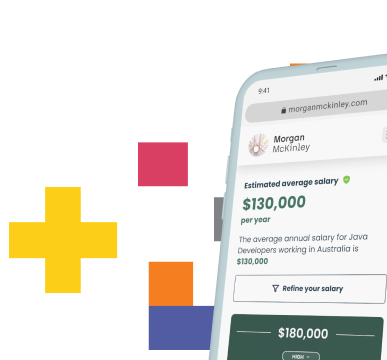Women in Tech - Sarah Vega, KPMG

"I think organisations also need to try exceptionally hard to find very senior female leaders who can attract other females leaders to the organisation."

In The Walking Dead, individual zombies aren’t that deadly, but when 20 of them shuffle into a circle around you, you’re in trouble. However if you find yourself surrounded, don’t panic. Most of the time you will be able to move faster than they can, and if you mimic them, you will avoid a messy ending. You will need to hide your vital signs of life, be non-communicative and unemotional with no mercy toward others.
To women in IT this may sound like an average day at the office trying to blend in with your colleagues especially at senior ranks ...
OK, so maybe I have exaggerated for dramatic effect but the underlying sentiment is valid and one thing that I have learnt is that it is good to keep a sense of humour. (Check out this short by Pixar which illustrates the point).
So do we really need to forget all our social skills or smear ourselves with the organs of dead zombies to prevent "live" zombies from smelling us? What will it take to get more females into technology? What will it take for leaders to look beyond their own biases? And take a chance on someone outside the box?
In my experience, many male leaders are also frustrated as they have a desire to build diverse teams but feel like they can't find the 'right' candidates, and their attempts to balance gender in their teams have largely been unsuccessful. I have often heard my male colleagues say words along the lines of ‘I would like more diversity but there aren’t enough women with the skills I need’ or 'there aren't many women in my team but that is reflective of the external market and we are doing the best we can'. I have been part of and led many gender diversity programs over the past 22 years of corporate life, and I certainly don’t have the magic bullet, but have a few learnt experiences of what made a difference.
Start from the top
In corporate Australia we generally set ourselves a low bar for gender diversity at senior ranks and continually fail to meet it. To have any impact at all, programs need to start from the top.
At a previous employer the CEO was very vocal about his support for gender diversity and was a member of the Male Champions of Change program. Each part of the organisation had aggressive targets (not quotas) and the Executive team demonstrated top down support. I started sponsoring the gender diversity program for IT after three years of declining diversity metrics at the Middle Manager and above levels. After spending time with many groups of women, I discovered that we had many talented women who had been selected to participate in leadership development programs but they weren't transitioning into the next level of management.
The reasons were;
- They were looking up at the predominantly pale, male, stale leaders and were not feeling inspired to strive for leadership roles
- They didn’t have anyone encouraging them to put themselves forward for opportunities and personally supporting them
- They also were not actively looking for their next role and scanning the internal job boards. Even if they did see a job ad they mostly self-selected out of the process before even applying for a variety of reasons including pre-conceived ideas on the impact to work/life balance or assumption that they didn’t have the skills necessary (see the famous HP study on why women don’t apply for roles unless they feel they are 100% qualified vs 60% for men)
The talent pipeline was there - but we hadn't been tapping into it successfully.
Based on these insights I implemented a few small interventions such as sending the women weekly emails, sharing personal stories, highlighting positions available, making myself available for calls and encouraging them to think differently. Within 3 months we had 50/50 male/female candidates at first interview stage and after 6 months had broken through our (admittedly low) target for the first time ever.
I think organisations also need to try exceptionally hard to find very senior female leaders who can attract other females leaders to the organisation. When I took on a past role I inherited 100% male direct reports. After a restructuring exercise I had a high number of exceptional women on my team and when I found myself recruiting for an additional General Manager role a year later, I needed to hire a man so that my team was gender balanced. This was in stark contrast to the mostly male teams of my male colleagues.
Challenge your view on what is 'right'
Leaders often hold a narrow view of what is 'right' and these leaders need to approach recruitment of women into senior roles in a different way.
Recently when I was recruiting for a senior leader I had three great choices at final interview stage. Two candidates (one male and one female) were quite like me - similar education and backgrounds and I felt very comfortable with both of them, we had good rapport, the interview process went smoothly and I had the impression that they would fit well into the team.
The final candidate was a female and she was very nervous. Her chin was wobbling, her voice shook when she spoke and she choked out her answers for the first 15 minutes before relaxing. She was inexperienced in the specific domain I was recruiting for but she had an amazing attitude that really stood out - approach to learning, empathy, courage, insight, personal purpose. She was also quite different to me and the interview didn't flow as easily as the other two.
However, I saw in her the makings of a great leader and I took a chance and gave her the role which was a promotion for her. She went on to be a star performer stewarding her team through a long period of intense, demanding work and coming through with some of the highest engagement scores in the entire IT function.
In an excellent book, Meltdown by Chris Clearfield and Andras Tilcsik, they report on one experiment in which scientists used functional magnetic resonance imaging (fMRI) to see how our brains react when we hold an opinion that deviates from our groups consensus. It turns out that two things happen when we go against the grain. First a brain region involved in error detection becomes very active. The nervous system notices a mistake and triggers and error message.
It's as though your brain is saying 'Hey, you are doing something wrong'. At the same time the area of the brain that anticipates rewards slows down. Your brain says - 'don't expect that you will be rewarded, this won't work out well for you.'
We tend to trust people who look similar to us, so homogeneous groups reduce tension and make for smooth effortless interactions. Of course that isn't always a bad thing. It can be easier to get things done when we are confident we can rely on our peers judgement. But it seems that homogeneity makes things too easy. It leads to conformity and not enough scepticism. It makes it easier to form a consensus and potentially we can all fall for the bad idea.
In the 'corporate world' we try to overcome this problem by mandating that a women sit on each interview panel. There are many practical problems with this approach. First, many appointments are 'direct' and the role is not advertised. Even when roles are advertised a formal process isn't followed despite the organisation having a 'policy. Even if policy is followed thing, the same few women are invited to sit on all the interview panels which just isn't possible.
Sometimes organisations use unconscious bias training but unfortunately, unconscious bias training just isn’t that effective. Research shows that educating, training, and providing feedback to managers are the least effective ways to create a more diverse workforce. So what can you do?
Create organisational pressure

Research also shows that for programs to be effective, voluntary works better than mandatory. Think voluntary diversity training and targets rather that quotas. However, there are ways to create organisational pressure within a voluntary system.
I started publishing monthly statistics at a prior employer and not only did I share the metrics amongst the leadership teams I also posted on the enterprise social channels so that the information was freely available. The metrics showed the current percentage of women by level, plus recruitment activity during the month including numbers of filled roles and percentage of women at interview stages and final offer. This created an organisational dialogue and top, bottom and sideways pressure on hiring managers to fulfil expectations on gender balance.
It's also useful to understand how your organisation is recruiting into open roles. In one organisation we discovered that 68% of roles were being direct appointed and when your pool of potential candidates is mostly male then guess what happens? We also discovered that although we were using external agencies for less than 15% of our middle manager hiring, the successful candidates were male 83% of the time! Once we understood these dynamics we could act to plug the gaps by stopping direct appointments and working with our panel suppliers to generate more balanced candidate shortlists.
So instead of developing a taste for human flesh or barricading yourself into the basement and waiting patiently for rescue, try working with your organisation to generate top down support, challenge your views on 'rightness' and generate top, middle and bottom up pressure.
About the author:
Sarah is a Partner at KPMG in Major Projects where she works with clients to solve their most difficult problems. Sarah was introduced to technology at a young age, by her father who worked at GCHQ in signals intelligence for the British Government.
He was a very strong influence on her, and by the age of 13 she was coding computer games. She did a Computing & Management degree in the early 1990's and has worked her entire career on large scale business & technology transformation programs across utilities, telco and financial services.
She spent the first 12 years of her career working for Accenture in the UK before emigrating to Australia in 2008 and spending the next decade working in executive leadership roles in FS and Infrastructure Services. She has also managed pretty much every work/life challenge out there from taking maternity leave (*2), emigrating around the world, working part time, working flexibly, working full time in two jobs – 1 @ home and 1 @ work, juggling kids, work, friends, family and she is an outspoken advocate of Women in Leadership and Women in IT.
NOTE: picture of Sarah doing a zombie fun run with her boys
The opinions expressed in this publication are those of the authors. They do not purport to reflect the opinions or views of KPMG or its customers.














